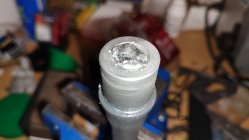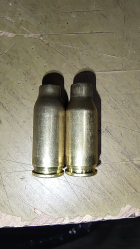Snert is right. Perhaps time to take a step back and shore up the fundamentals on forming your case before ramping up ammo production and potential risk.
All of the challenges with any new rifle, especially a wildcat or one-off is determining the chamber of your rifle. There are various tools/gages to assist in this process, and then there is some trial and error. Best practice is try to accurately measure these dimension in a controlled environment (i.e. no combustion). All of this is more complicated if the rifle is a AR.
Step 1 - Determine the chamber length. The common methods are to use are: (1) chamber length gage (see link); (2) start with long case and continue to trim it until the bolt can just barely close; or (3) last ditch effort is creating a chamber mold using cero safe.
https://www.brownells.com/reloading...s/sinclair-chamber-length-gage/?sku=749000811
This tool is easy to use and gives fairly reliable measurements. This will now give you your maximum case length. Keep in mind that during the initial fire-forming of your cases that the case length will shorten as the case expands and shoulders bump/fill out.
Next steps to determine Location of Shoulder and Neck Diameter. These will allow you to properly set up sizing die for shoulder bump and also determine what Neck Thickness is needed to provide adequate clearance.
All of the challenges with any new rifle, especially a wildcat or one-off is determining the chamber of your rifle. There are various tools/gages to assist in this process, and then there is some trial and error. Best practice is try to accurately measure these dimension in a controlled environment (i.e. no combustion). All of this is more complicated if the rifle is a AR.
Step 1 - Determine the chamber length. The common methods are to use are: (1) chamber length gage (see link); (2) start with long case and continue to trim it until the bolt can just barely close; or (3) last ditch effort is creating a chamber mold using cero safe.
https://www.brownells.com/reloading...s/sinclair-chamber-length-gage/?sku=749000811
This tool is easy to use and gives fairly reliable measurements. This will now give you your maximum case length. Keep in mind that during the initial fire-forming of your cases that the case length will shorten as the case expands and shoulders bump/fill out.
Next steps to determine Location of Shoulder and Neck Diameter. These will allow you to properly set up sizing die for shoulder bump and also determine what Neck Thickness is needed to provide adequate clearance.
Last edited:












